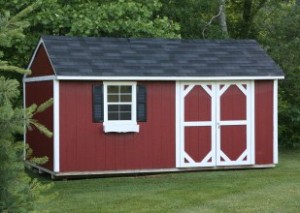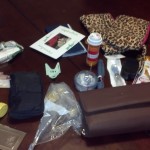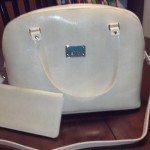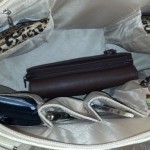
8 EASY STEPS TO PREPARE YOURSELF FOR DEPARTURE
Lately, my inbox has been flooded with emails for travel destinations and a myriad of travel products. This doesn’t surprise me since summer seems to be the quintessential season to travel. But have you ever felt like preparing to depart makes you too exhausted to even think about going on a trip – I sure have! If you find yourself losing time preparing for your trip, your stress level skyrockets and you dread traveling, read on for eight, easy steps to solve this problem!
LIST IT OR LEAVE IT: Create a packing list in advance; a packing list will help you to remember what you need to take, prevent you from taking too much and keep you on track. Think of it as the blueprint for your trip! Create a master list by writing down all of the things you could possibly need for your trip and review it after each trip to refine it for the next. After all, you should always pack what is on your list, but you should never pack what isn’t on your list!
CORRAL THE CONTAINERS: Don’t get caught with broken luggage just before packing. Gather the luggage you will be using ahead of time and check it for holes, rips or broken closures; repair or replace if needed. Save time and eliminate pressure by setting your luggage out and open in an easy to reach place. When you come across something you want to take with you, just pop it into the appropriate bag and it’s one less thing you have to remember!
MAP IT OUT & TEST DRIVE: Take the time to lay out what you will wear so you can assemble outfits and accessorize ahead of time. Once your outfits are all put together, pack it in the luggage that is open and waiting. You’ll eliminate the last minute decision making that causes so much stress by taking your clothes for a test drive. Remember that comfort should always come first and sticking with a color theme makes it easier to mix and match with less pieces.
ADD A SPECIALTY BAG: Try using a toiletry bag inside your luggage. Purchase sample bottles to store your hygiene, makeup or shaving items and put in a hanging bag – smaller, sample sizes saves space and can easily be replenished after your trip. An extra bonus: you won’t have to unpack the items individually – just remove the bag from your suitcase and hang it up….more time for you to play!
DON’T FORGET THE MEDICINE: Don’t be caught without your prescription medicine during your travels. Review all medicines that you will need to take ahead of time, refill any prescriptions and store them in the original containers. Always keep your prescription medicine with you at all times. DO NOT pack them in the checked luggage – it’s a good idea to keep them in a clear, sealed bag in your purse or carryon bag.
FIRST AID TO THE RESCUE: It’s always a good idea to take a portable, first aid kit with you when traveling. This kit can range from a simple assortment of Band-Aids and antiseptic in a travel size pouch to an insulated, lunch bag containing commonly used over the counter medicines and a larger selection of first aid accoutrements. It can certainly save you a late night trip to a drugstore that might be far away if you get a particularly nasty sunburn or bee sting!
BRING THE GOODY BAG: It’s always a good idea to have an activity bag that you pack with special things to keep you busy when traveling – there’s always a delay somewhere! If you have children, create a toy bag or backpack that you use only when traveling – this will make the items seem “special”. Fill it with small, easy to use items including books, colored pencils and small toys. A goody bag doesn’t just apply to the kids – get creative and make an adult version!
WHO AM I & WHERE AM I GOING: Make sure that you keep your id, credit card, cash and travel information on you at all times. A small wallet portfolio is great for keeping this information together and a check size accordion file is great way to store it if you are traveling by car. You could use your phone as a file cabinet, too, for all of your details: leave yourself a message, put the trip details into a text or store it in a password protected document.
As you can see, getting ready to depart doesn’t have to take a lot of time, create undue stress or make you dread your journey. Your trip can be fun and create lasting memories if you follow the above eight, easy steps. So go on, dream away and find that fantastic place to travel to this summer….you’ll be able to get ready in no time.
As always, drop us a line and let us know all about your adventures – we’d love to share them with our visitors. Happy traveling!











